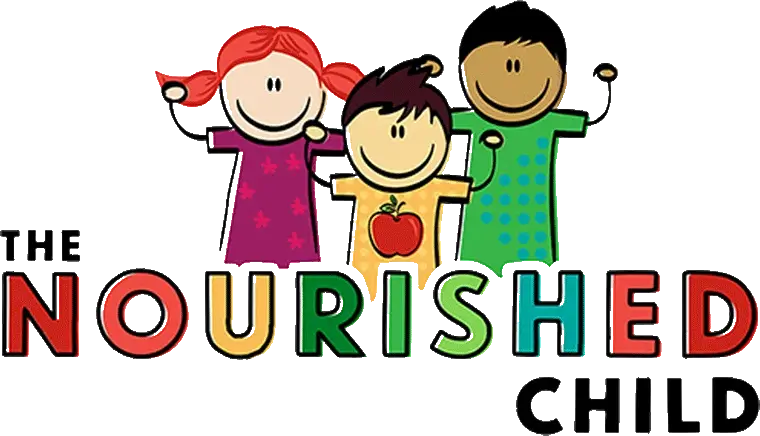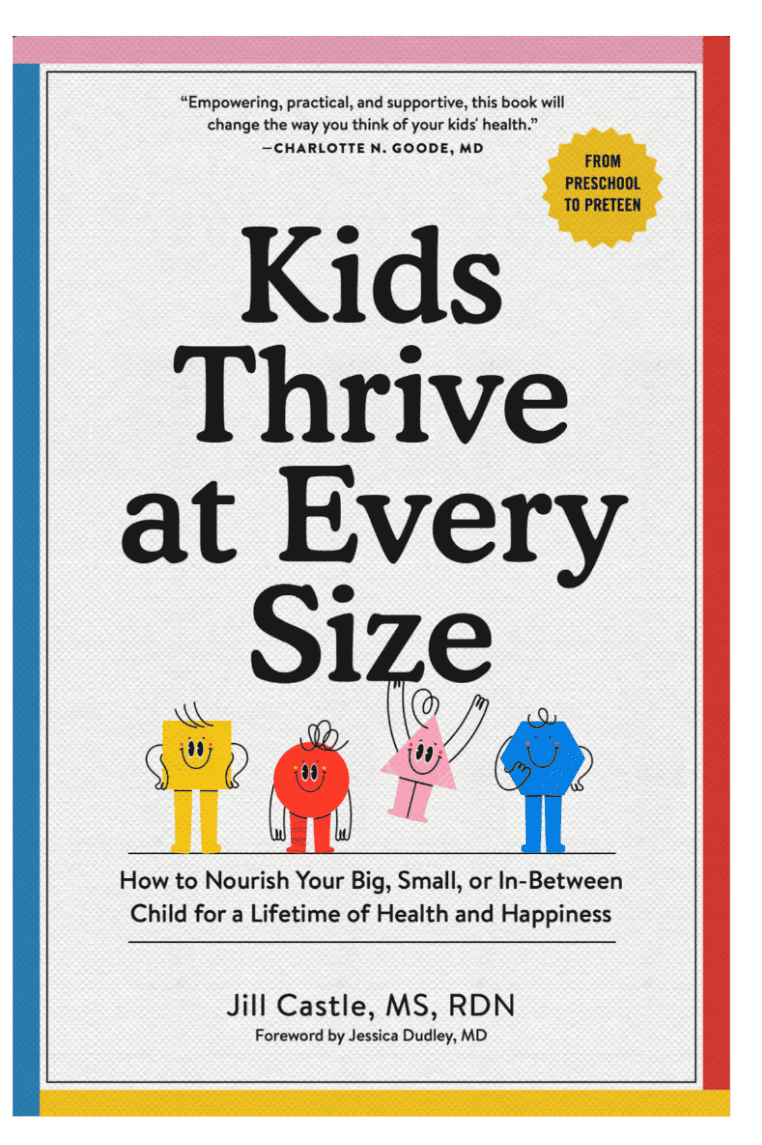Your Feeding Style: How to be a Better Food Parent
March 27, 2025
What’s your feeding style? Learn about your parental feeding style and whether it’s helping your child, or not.
You have a hairstyle, a fashion style, a style of walking and talking, and more. You also have a parental feeding style — or maybe several feeding styles rolled into one.
In this article, you’ll learn the three feeding styles, how they affect child eating, and how they show up in the feeding environment, day-to-day.

What is a Parental Feeding Style?
Your feeding style summarizes the general attitudes and philosophies you have about feeding your child.
There are three recognized parental feeding styles: Controlling, Indulgent, and Diplomatic.
Each feeding style influences the daily interactions with food and around the meal table. These are called feeding practices, and they affect a child’s eating habits, eating behaviors, and relationship with food.
As a pediatric nutritionist, I think understanding your feeding style is essential and it’s something I teach parents about during consultations.
Feeding is the Hardest Job of Parenthood
Feeding your child is arguably one of the most time-consuming and grueling jobs of parenthood. It’s often thankless and sometimes plagued with parent insecurity, low confidence, and sometime guilt.
Many struggle through parent-child interactions when feeding their children.
The daily effort of getting meals on the table and getting children to eat them can overwhelm even the most “together” caretakers. Think about all the planning, buying, preparing, serving, and cleaning up that goes along with feeding a family.
It’s a lot!
A sobering statistic: throughout an 18 year childhood, you will probably feed your child over 28,000 times (assuming you provide the recommended age-appropriate meals and snacks).
You really need to know how parent feeding styles play into healthy eating habits.
How Do Feeding Styles Relate to General Parenting Style?
Researchers that study feeding suggest that feeding styles closely mirror an individual’s parenting style.
When you see other parents, you probably recognize that everyone has their own parenting style. You may be attracted to those parents who align with your parenting style. How you parent and how you feed are related.
Although you might use one feeding style and approach most of the time, it can change based on situation, child characteristics, and fluctuate with another feeding style.
You Feed Like You Were Fed
One’s feeding style mimics the past experiences of childhood. In fact, some researchers propose that one’s feeding style is passed down (trans-generational feeding). For example, if you had to finish your meal before you could leave the table, then you may require your own child to do the same.
Child feeding is deeply ingrained from childhood (like much of our thinking, reactions and actions are), and may become your “go to” method for feeding. Or, if you had negative childhood experiences, you may want to avoid repeating these with your own children.
Three Feeding Styles
Not only are food and nutrition important considerations in the health of your child, daily feeding interactions are equally, if not more, important.
As I mentioned, you have one prevalent style you use in your day-to-day feeding interactions with your child. However, you can dip into every one of these parental feeding styles from time to time. Feeding styles have different dimensions of demandingness and are associated with specific feeding practices, like pressure to eat, food restriction, rewarding with food, and catering to child preferences.
Case in point, when you’re stressed and busy, you might become more controlling with feeding your child. When you’re at a party, you may become more indulgent. When your child has picky eating behaviors and is underweight, you might use more pressure to eat (a controlling feeding characteristic).

The Controlling Feeding Style (Formerly Authoritarian Feeding)
This is a “parent-centered” feeding approach. The parent is the leader and has strict rules about eating, like finishing a meal before being dismissed from the table. We associate this style with “The Clean Your Plate Club,” where rules about eating reign, from trying new foods to completing a meal.
Here are some common “rules” you might see:
- You get dessert if you eat your dinner.
- Parents pre-plate food for their children.
- High demandingness around food: Eating is directed by the parent, such as “take another bite” or “finish your food,” rather than self-directed by the child and their natural appetite.
- The child may not have much choice, and food preferences and appetite may be ignored by the parent’s wishes around diet quality and “healthy” eating.
As such, previous studies suggest children may lose their sense of appetite and have poor appetite regulation. They may overeat to comply with parental requests to eat more or finish their plate of food. With this, they may lose their sensitivity to fullness cues.
Or, the child may eat less than they need because they’re pushed or pressured too much and this turns off their appetite. Weight problems, both underweight and weight gain, are associated with this feeding style.

Indulgent Feeding Style (Formerly Permissive Style)
Being indulgent with feeding is also known as the lax or loose style of parenting around food. I often refer to the permissive parent as “The ‘Yes’ Parent,” someone who shows high responsiveness and low demands of their child.
A parent with this style shows the following characteristics:
- Even though “no” or limitations may be the first response to extra food requests or treats, “yes” ultimately reigns.
- There is low demandingness around food; rules and limits around food and eating are lax, or loose.
- The parent is hyper-sensitive to the child’s needs, like food preferences, hunger, and food requests, especially at snack time.
The classic example of this is the mother who is managing a tantrumming child at the grocery store who wants candy at the checkout stand. The child begs and begs, hearing, “no, no, no…” until Mom is worn out and says, “Well….okay, I guess so.”
Previous research suggests that children raised with an indulgent style of feeding have a tough time self-regulating their food intake, particularly sweets.
I frequently see a lack of structured meals and snacks, and a lack of food boundaries, as well.
As a result, children may struggle with weight, as research shows there may be few limits on high-calorie foods and an associated higher child weight status.
[Watch What’s Your Parent Feeding Style on YouTube!]
How Feeding Styles Affect the Healthy Relationship with Food
These feeding styles – controlling and indulgent — are considered to be counterproductive feeding styles. In short, they interfere with a child’s developing relationship with food. Counterproductive feeding can change children’s behavior, as well as their positive attitudes about food, how they interact with it, and how they perceive themselves in relationship with food.
A poor relationship with food can lead to poor food choices, under- or overeating, and/or poor self-image and self-esteem.
It’s important to move toward a positive feeding style! And this is where the diplomatic feeding style enters the picture.
The Gold Standard: Diplomatic Feeding Style
Formerly called the Authoritative feeding style, I fondly call this the “Love with Limits” feeding style. It promotes independent thinking, eating regulation, and better choices, while also setting boundaries and expectations for your child.
The diplomatic feeding style focuses on the details around the meal (what will be served, when it will happen, and where it will be served), but allows the child to decide if they will eat what is prepared, and how much they will eat.
This diplomacy in feeding is based in The Division of Responsibility, coined by Ellyn Satter, and the research around this feeding style.
Trusting your child — their ability to recognize hunger and fullness signals and then eat the amount of food to satisfy those cues — forms the foundation of this style.
Children raised with the authoritative style have better outcomes in health. Studies show they are leaner, better at regulating their food consumption, and secure with food and eating.
In fact, the most current research suggests this style of parental feeding is an effective way to promote healthy eaters, healthy children, and avoid a higher weight status.
Children of authoritative parents seem to have fewer food refusals, enjoy eating healthy food, and avoid emotional overeating.
What about Parent Feeding Styles for Babies?
Good question! In young infants and toddlers, responsive feeding is the focus. This lays the foundation of trust for later childhood (hello, toddlerhood!) when feeding styles and the associated feeding practices can get off track.
More Resources for a Positive Feeding Style
- Tune into my podcast where I interview experts in child nutrition and feeding, as well as share my own views on what it means to be a great feeder.
- Food Parenting Guide
- My program, The Nourished Child Blueprint, does a deep dive into feeding styles, the daily practices we use when feeding kids, and how these play out in their autonomy with food and relationship with it.
- Join my newsletter, The Munch, where I answer parent questions, review the latest science in child nutrition and feeding, and help you learn more!
I updated this post in March 2025.

Jill Castle, MS, RD
I like empowering parents to help their children and teens thrive at every size with realistic advice centered on healthful habits around food, feeding, nutrition and health behaviors. As a pediatric dietitian and author, my goal is to share strategies and realistic advice to help you raise a healthy and happy child through my articles and podcast.




